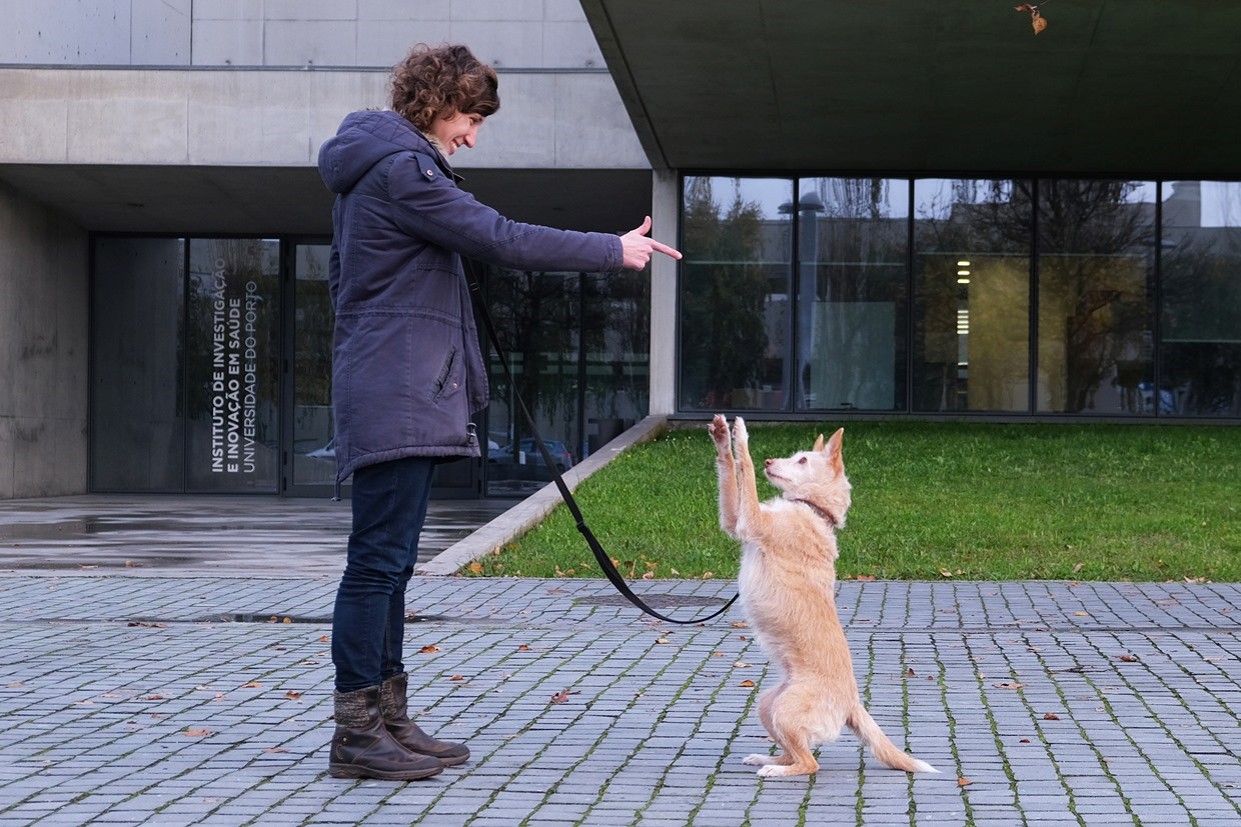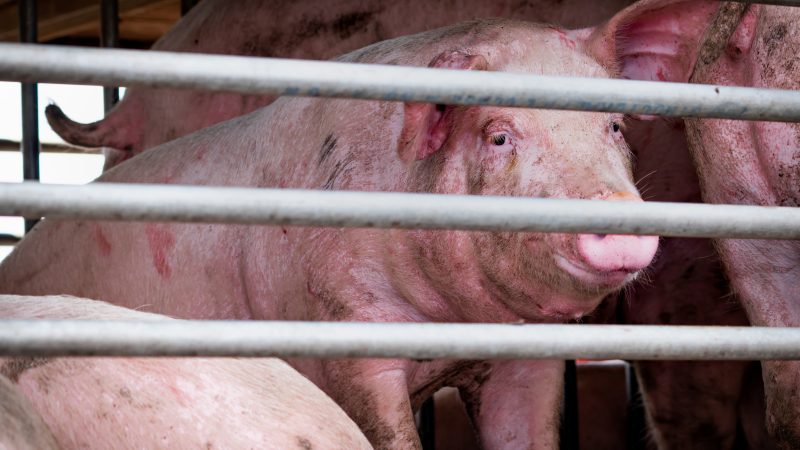Training methods do have an impact on dog welfare – latest research reveals

Latest research highlights importance of positive rewards
With an estimated 10.1 million pet dogs in the UK alone today* dogs have an increasingly important role as companion animals and, in order to best fulfil that role, need to be trained to behave in an appropriate manner – from walking calmly on a lead to toileting outside.
Sadly, behavioral problems are the most frequently cited reason for rehoming or relinquishing dogs to shelters and for euthanasia, which suggests that such training is often missing or unsuccessful. Dog training methods range broadly from “aversive based” methods which use positive punishment (for example tapping the dog on the nose with a newspaper) and negative reinforcement (such as when the dog’s bottom is pushed to force the dog into a sit, and then released once the dog is in a sit) to “positive reinforcement” methods such as food treats, praise, petting or a favourite toy/game. Although aversive-based training has been strongly criticised for negatively affecting dog welfare, there is no comprehensive research focusing on companion dogs and mainstream techniques, and most studies rely on owner-reported assessment of training methods and dog behavior.
Evaluation of the effects of dog training methods on welfare
Now, in what is believed to be the first comprehensive and systematic study to evaluate and report the effects of dog training methods on companion dog welfare, Portuguese researchers have discovered that the welfare of companion dogs trained with aversive-based methods is at risk, especially if these are used in high proportions. The authors found that dogs trained with aversive‑based methods experienced poorer welfare during the training sessions than dogs trained with reward-based methods and, if aversive methods were used in high proportions, they also experienced poorer welfare outside the training context.
Funded by UFAW
The study, which was funded by a UFAW Small Project Award, aimed to perform a comprehensive evaluation of the effects of different training methods on the welfare of companion dogs both within and outside the training sessions. Lead author of the study, Ana Catarina Vieira de Castro, PhD, and her colleagues at the University of Porto argue that this is a rather unique piece of work as it’s larger than any previous study (92 dog-owner pairs from 7 schools) and is entirely based on data collected by the researchers, as opposed to the typical owner survey approach. This provides much stronger evidence than previously existed for the idea that aversive training methods affect dogs negatively.
The researchers conducted the study in two phases over nearly three years from October 2016 to March 2019 and studied 92 companion dogs from three reward-based training schools and four aversive-based training schools.
Stress-related behaviours
To evaluate the dogs’ welfare during training, video recordings were taken to examine the frequency of stress-related behaviours such as lip-licking and yawning and whether the dog appeared tense or relaxed. Saliva samples were also taken to ascertain the concentration of cortisol, a stress hormone. Dogs who had received positive‑reinforcement training exhibited far less stress behaviours and had lower cortisol levels than dogs trained with aversive-based methods
Aversive training methods
For evaluating welfare outside the training sessions and to see if the effects from the aversive training methods were more long lasting, dogs participated in a cognitive bias task, a test which assesses the animals’ underlying emotional state. In this task the animals learned to distinguish between two locations of a food bowl. If, for example, the bowl was on the left side of the room, it would always contain a food treat; if it was on the right it would always be empty. The dogs rapidly learned not to go to the empty bowl. After the dogs had learned this, the bowl was placed in intermediate positions (ambiguous). In this test with ambiguous positions, dogs in a more positive mental state see “the glass as half full”, running towards the bowls as if they held food treats; whereas dogs in more negative mental states see “the glass as half empty” and move more slowly towards the bowls in ambiguous places, unconvinced that they will find a food treat. The authors found that dogs trained with high proportions of aversive-based methods were more pessimistic about finding anything in the ambiguous bowls, running more slowly towards them, than either dogs which had undergone low proportions of aversive-based methods or dogs trained with reward-based methods.
Increases in cortisol levels
Overall, the results showed that dogs trained using aversive methods displayed more stress-related behaviours, more frequent low and tense behavioural states, panted more during training, and exhibited higher post-training increases in cortisol levels than dogs trained using rewards. Moreover, if dogs were trained with high proportions of aversive methods, they were also in more negative mental states. These findings indicate that aversive‑based training methods, especially if used in high proportions, may compromise the welfare of companion dogs both within and outside the training context.
Lead author of the study Dr Vieira de Castro said: “Understanding the effects of training methods on companion dog welfare has important consequences for both dogs and people. Both determining and applying those training methods that are less stressful for dogs is a key factor to ensure adequate dog welfare and to make the most of the benefits we humans derive from interactions with dogs. We are grateful, first and foremost, to all dogs and their owners who participated in this study; without them this research would never have been possible. A very special acknowledgment to the dog training schools and their trainers that opened their doors for our participant recruitment and data collection.”
*PDSA survey February 2020 findings showed that 24% of the UK adult population have a dog with an estimated population of 10.1 million pet dogs. Globally, there are estimated to be 470 million pet dogs (Statista.com)
Full study
The full study Vieira de Castro AC, Fuchs D, Morello GM, Pastur S, de Sousa L, Olsson IAS (2020) Does training method matter? Evidence for the negative impact of aversive-based methods on companion dog welfare. PLoS ONE 15(12): e0225023. https://doi.org/10.1371/journal.pone.0225023 was published in the open access journal PLOS ONE on 16 December 2020.
The Universities Federation for Animal Welfare (UFAW) is an internationally recognised, independent scientific and educational animal welfare charity. It works to improve knowledge and understanding of animals’ needs in order to achieve high standards of welfare for farm, companion, research, captive wild animals and those with which we interact in the wild.
UFAW improves animal welfare worldwide through its programme of awards, grants and scholarships; by educational initiatives, especially at university and college level; by providing information in books, videos, reports and in its scientific journal Animal Welfare; by providing expert advice to governments and others, including for legislation and ‘best practice’ guidelines and codes; and by working with animal keepers, scientists, vets, lawyers and all those who care about animals.






